
Feature Archive |
|
Magnificenza! Titian and Michelangelo, Manet and Velázquez |
Titian and Michelangelo
Great contemporaries in painting are inevitably rivals: Giotto and Duccio, Rembrandt and Rubens, Constable and Turner, Delacroix and Ingres, Monet and Degas, Matisse and Picasso.
Michelangelo and Titian, the two most celebrated painters of the 16th century, lived in Rome at the same time in the winter of 1545-46. Michelangelo, having completed the ceiling of the Sistine Chapel, was the undisputed master of the city's art scene. He seems to have studiously avoided Titian. One day, on a break from painting his sombre last frescoes The Conversion of St. Paul and The Crucifixion of St. Peter, he paid a surprise visit to Titian's workshop in the company of his fellow Tuscan, the writer Giorgio Vasari.
Titian for his part was famous all over Europe as "the prince of painters and the painter of princes". He was much sought after for his atmospheric and evocative landscapes, and above all for his erotic "bacchanals" and "posies", suggested by Ovid's Metamorphoses. In a stunning series of works, he depicted various courtesans du jour, gloriously nude and languorously awaiting their lovers. (In the 19th century Mark Twain saw one of these paintings and was shocked, for reasons which you can read in this passage from A Tramp Abroad.) Titian was putting the finishing touches on one of the juiciest of these, the Danaë, when Michelangelo arrived.
Danaë, in Greek mythology, was the comely daughter of the King of Argos. Upon hearing from an oracle that she would bear a son who would kill him, the king understandably locked her up in a high tower made of impregnable [no pun intended? - ed.] bronze. But Zeus/Jupiter, finding her all the more irresistible, entered the tower through the roof in the form of a fiery burst of light which fell gently into her lap. Thus was Perseus conceived. The demand for this picture was amazing; Titian painted at least five versions.
Michelangelo, now in the profoundest period of his art, could hardly have approved of any of this: the pagan story, the secular genre and the female model. Vasari tells us he coolly praised the painting "as is polite" and departed. Later he told Vasari (who recorded this in his Lives of the Most Excellent Painters) that while the picture was well colored [colorito], it "was a pity that design [disengo] was not taught in Venice from the first and that her painters did not have a better method of study". If Titian "were aided by art and design as he is by Nature, especially in imitating from life, he would not be surpassed, having a very fine wit and a most charming and vivacious style"
This remark wonderfully sums up the difference between two traditions of painting: Michelangelo stands for disengo, Titian for colorito.
In the Florentine pictorial tradition from Giotto to Masaccio to Botticelli, drawing was viewed as the essential ground of artistic endeavor, the primary means for making art approximate nature. Beginning with Leonardo da Vinci and then culminating in Michelangelo, the stakes changed. These Florentine artists wanted to surpass and idealize nature. "For without design," writes Vasari "and a study of selected ancient and modern work, skill is useless, and it is impossible by mere drawing from life to impart grace and to perfect Nature certain parts of which lack beauty..."
In the school of Venice, painters tried not to perfect or idealize life, but rather to capture it in all its colorful wit, charm and vivacity. Colorito -- not only color but also its judicious application -- was deemed fundamental to conceiving images charged with the look of life. Oil painting directly on canvas was particularly suited to capturing the look, the sheer appearance of material things seen in a particular light.
Titian's paintings glow with a shimmering evocation of the things of this world. The portrait, the landscape, and above all the nude: all the familiar subjects were transformed by Titian's magic into images that seemed to catch the breath of life. If such paintings remind us as well of the transient nature of human life, so much the better. For "all the things we love in this world must fade".
The exhibition Titian, currently at the National Gallery in London, brings together 40 paintings by the master of this mortal realm. The online website features sections on Titian's "Life", "Early Career", "Bacchanals", "Landscapes" "Portraits" and "Late Style". Each section is illustrated with high definition images. There are spectacularly painterly works to be seen here, including the version of the Danaë from Naples and its antithesis, the profoundly tragic Entombment of Christ from Madrid. The four surviving "bacchanals" commissioned by Alfonso d'Este for his private contemplation and enjoyment are brought together for the first time since their dispersal in 1598. A recreation of his famous Renaissance room can be viewed on a Quick Time film clip.
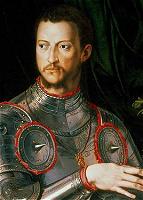
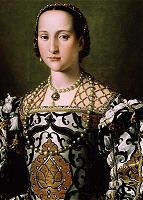 The other side of the story of Italian art, i.e. the side represented by Michelangelo and his tremendous influence in the 16th century, is found in Magnificenza! The Medici, Michelangelo, and the Art of Late Renaissance Florence currently at the Detroit Institute of Arts. One hundred and eighty examples of Florentine "design" -- paintings, sculptures, decorative arts and works on paper, many of them rarely seen outside Italy -- are on display for the first time in North America. Michelangelo and Vasari both worked for the Medici grand dukes who were among the most renowned patrons of art the Western world has ever known. There are nine works (three sculptures and six drawing) by Michelangelo as well as pieces by Cellini and Giambologna; paintings by Pontormo, Bronzino and Vasari; porcelains, carved semiprecious hard stones and tapestries. Not just a good or interesting show, according to Robert Hughes, but a great one.
The other side of the story of Italian art, i.e. the side represented by Michelangelo and his tremendous influence in the 16th century, is found in Magnificenza! The Medici, Michelangelo, and the Art of Late Renaissance Florence currently at the Detroit Institute of Arts. One hundred and eighty examples of Florentine "design" -- paintings, sculptures, decorative arts and works on paper, many of them rarely seen outside Italy -- are on display for the first time in North America. Michelangelo and Vasari both worked for the Medici grand dukes who were among the most renowned patrons of art the Western world has ever known. There are nine works (three sculptures and six drawing) by Michelangelo as well as pieces by Cellini and Giambologna; paintings by Pontormo, Bronzino and Vasari; porcelains, carved semiprecious hard stones and tapestries. Not just a good or interesting show, according to Robert Hughes, but a great one.|
• Titian at the National Gallery, London through May 18, 2003 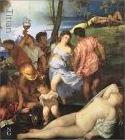 Save 30% on the Exhibition Catalogue Titian |
• The Medici, Michelangelo, and the Art of Late Renaissance Florence at the Detroit Institute of Arts through June 8, 2003 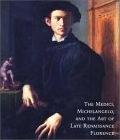 Save 30% on the Exhibition Catalogue The Medici, Michelangelo, and the Art of Late Renaissance Florence |
Manet and Velázquez: The French Taste for Spanish Painting
Willem de Kooning famously said that oil painting was invented to depict a woman's flesh.
We know that Diego Velázquez, as well as the 17th century master painters of flesh such as Peter Paul Rubens, went to school in front of the transcendent Titians in the royal collection in Madrid (now the Prado Museum). From then on, serious painters made the pilgrimage to Spain to tap into this vital tradition. There is a notable line of influence on French painting, especially in the 19th century; think of how much Edouard Manet's works owe to Velázquez..
The curators at the Metropolitan Museum of Art in New York City must have been pondering this matrix for a long time. The astonishing result is their current exhibit, Manet/Velázquez: The French Taste for Spanish Painting. The online feature which accompanies this show is quite simply magnificent. With this truly interactive exhibit, the Met has demonstrated to every other art museum in the world how to bring together the best art history scholarship, savvy technological expertise, and a commitment to public education in the best sense.
The site offers panoply of superlative painters and paintings for your edification and enjoyment. There are sections on "Artists' Journeys Through Spain," with an interactive map of Spain that shows us where Manet, Mary Cassatt, Thomas Eakins and John Singer Sargent went on their Spanish journeys, what cities and artists they saw, and what they wrote about it all. In the five "Comparative Galleries" we can actually drag two paintings into an "alcove" for closer comparison. The "Artists and Paintings" section allows us to study scores of works by French and American artists and the Spanish masters they went to see, including Goya, Murillo, El Greco, Zurbarán and the ubiquitous Velázquez.
For more on Titian, Venetian color and Florentine drawing be sure to consult the indispensable Metropolitan Timeline of Art History.
• Manet/Velázquez: The French Taste for Spanish Painting
at the Metropolitan Museum of Art through June 8, 2003
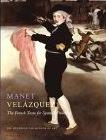
Save 30% on the Exhibition Catalogue
Manet/Velazquez: The French Taste for Spanish Painting
Past Articles
February, 2003
Masterful Leonardo and Graphic Dürer, by Joseph Phelan
January, 2003
Favorite Online Art Museum Features, by Joseph Phelan
Studies for Masterpieces, by John Malyon
2002
Advent Calendar 2002, narrated by Joseph Phelan
Portrait of the Artist as a Serial Killer, by Joseph Phelan
Renoir's Travelling, Bonnard's "At Home", by Joseph Phelan
The Philosopher as Hero: Raphael's The School of Athens, by Joseph Phelan
The Greatest Works of Art of Western Civilization
Celebrating Heroes; Celebrating Benjamin West, by Joseph Phelan
Chasing the Red Deer into the American Sublime (Education and the Art Museum, Part II), by Joseph Phelan
Planning Your Summer Vacation, by Joseph Phelan
Education and the Art Museum, Part I, by Joseph Phelan
Unsung Griots of American Painting, by Joseph Phelan
The British Museum COMPASS Project, interview by Joseph Phelan
Robert Hughes, Time Magazine Art Critic: Biography and Writings
2001
Software review: Le Louvre: The Virtual Visit on DVD-ROM, by Joseph Phelan
Tragedy and Triumph at Arles: Van Gogh and Gauguin, by Joseph Phelan
Her Last Bow: Sister Wendy in America, by Joseph Phelan
Love, Death and Resurrection: The Paintings of Stanley Spencer, by Joseph Phelan
Who is Rodin's Thinker?, by Joseph Phelan
Celebrations North and South, by Joseph Phelan
Rubens and his Age, by Joseph Phelan
Great Reproductions of Great Paintings
The Passion of Christ, by Joseph Phelan
Edouard Manet: Public Spaces, Private Dreams, by Joseph Phelan
Henry Moore and the British Museum: The Great Conversation, by Joseph Phelan
2000
Notorious Portraits, Part II, by John Malyon
Notorious Portraits, Part I, by John Malyon
The Other Michelangelo, by Joseph Phelan
The Art of Drawing, by Joseph Phelan
Poussin and the Heroic Landscape, by Joseph Phelan
Great Art Museums Online, by Joseph Phelan
Venetian Painting and the Rise of Landscape, by Joseph Phelan
Forbidden Visions: Mythology in Art, by Joseph Phelan
Themes in Art: The Passion of Christ, by Joseph Phelan
Web site review: Christus Rex
Web site review: National Gallery of Art, Washington, D.C., by Joseph Phelan
Online exhibit review: Inuit Art: The World Around Me, by John Malyon
Poll: Who is Producing the Most Interesting Art Today? (Results)
Poll: Who is Producing the Most Interesting Art Today? (Part II)
1999
Poll: Who is Producing the Most Interesting Art Today? (Part I)
Spotlight on The Louvre Museum
Spotlight on Impressionism
Spotlight on Optical Art
Spotlight on Animals in Art
Spotlight on Surrealism
Spotlight on Sculpture
Spotlight on Women in the Arts
Spotlight on The Golden Age of Illustration
Spotlight on Vincent van Gogh
Spotlight on Great Art